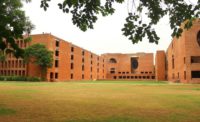Plan to Demolish Landmark Prague Railway Bridge Sparks International Outcry

A scheme to replace a 1901 rail bridge spanning the Vltava River in Prague has emerged as a recent preservation flashpoint in the Czech capital city. Photo by Oleh Morhun, Unsplash
A recently announced plan by the Czech Railway Infrastructure Administration (SŽ) to demolish and replace a historically significant rail bridge in Prague has sparked outrage among architects, preservationists, and the public alike. Featuring a distinct parabolic steel-girder structure, the landmark bridge spans the Vltava river and was built in 1901 by the late Habsburg-era engineer František Prášil, who also designed the nearby Petřín Lookout Tower (inspired by the Eiffel Tower) and, together with Bedřich Münzberger, the Industrial Palace for the city’s 1891 Jubilee Exhibition. The plan highlights issues of historic preservation that have plagued Prague in recent years, especially since a 2008 incident where the planned construction of high-rise buildings threatened the city’s status as a UNESCO World Heritage Site.
In 2004, the crossing—often dubbed the Vyšehrad Bridge for its proximity to the castle of the same name—was declared a National Cultural Landmark by the Czech Ministry of Culture, which cited the structure as an integral part of the cultural and industrial heritage of Prague and, in particular, of the Smíchov district on the west bank of the Vltava. Despite the bridge’s significance, in May 2021 SŽ sponsored a design competition seeking a replacement that canw accommodate increased rail traffic. The winning scheme, submitted by 2T Engineering with architect Iveta Torkoniaková, proposed preserving the structure’s stone piers and, to the surprise of many, replacing everything else. During a discussion at the National Technical Museum in Prague on January 18, 2023, Torkoniaková stated that a design goal was to achieve as much transparency as possible. However, this “transparency” would deprive the Prague cityscape of an important and longstanding visual axis connecting Vyšehrad castle and the Smíchov neighborhood.
Czech architects, activists, and public figures have openly questioned the motivations of SŽ, accusing the agency of failing to properly maintain the century-old structure and allowing it to corrode. Although the winning scheme proposed reusing the original piers (the designers argue that they alone are adequate holdovers), some, like architect Mirko Baum, cast doubt on the legitimacy of the competition because the brief did not require entrants to preserve any elements of the existing structure despite its landmark status. As architectural historian Rostislav Švácha told RECORD: “The competition process might have been influenced by a possible conflict of interest because three supposedly independent members of the jury—Jaroslav Wertig, Martin Krupauer, and Michal Drahorád—oversee different projects for the Railway Administration.” A local preservation group, the Club for Old Prague, unambiguously denounced attempts to replace the bridge, which also includes walkways for pedestrians and cyclists who use the crossing to reach the lively New Town area, and a civic association known as Save the Railway Bridge launched a petition, which has garnered more than 14,700 signatures to date.
On February 19, 2023, the movement to save the bridge received an additional boost when several high-profile Czech architects, joined by contemporaries in the Netherlands, Japan, Germany, and the United States, among other nations, sent an open letter to the Czech government, the Prague city council, and UNESCO calling for its preservation. Václav Girsa, head of The Czech Committee of the International Council of Monuments and Sites (ICOMOS) opposed demolition as well, noting that the monument falls within a UNESCO World Heritage Site.
Despite these efforts, activists Pavel Štorch and Hana Heringová point out that SŽ “has not changed its position; it still sees the construction of a new bridge as the only possible solution.”
Eugen Brühwiler, professor of structural engineering at the Swiss Federal Institute of Technology in Lausanne and author of a 2019 study of Vyšehrad Bridge, has argued that the bridge can be restored, preserved, and adapted to meet contemporary demands. “Increased railway traffic does not stand in opposition to the cultural and socio-economic value of the bridge,” he said during a public discussion.
Following the public outcry, Czech transport minister Martin Kupka organized a scientific seminar to examine the state of the structure. While an official report has not yet been published, SŽ informed the press that a majority of experts in attendance voted against the preservation of the bridge. Brühwiler, who was present, told RECORD via email: “There was no vote among the ‘experts’” and that “no realistic rehabilitation project was presented.”
The notion of a cultural landmark is socially and historically conditioned, and the Modern movement arguably helped the public appreciate 19th- and early-20th-century infrastructure projects. In the 1920s, Karel Teige, an architecture critic and a leading figure of the Czech avant-garde movement, described such engineering projects as the new art of the modern era. And after the publication of Le Corbusier’s Towards a New Architecture (1923) and Sigfried Giedion’s Building in France, Building in Iron, Building in Ferroconcrete (1928), these riveted steel constructions were endowed with an important aesthetic and cultural value. While the SŽ refuses to make concessions or see the value of the Vyšehrad Bridge, the fate of this beloved Prague monument remains uncertain.

.jpg?height=200&t=1713468361&width=200)




